Explain the types of racemose inflorescence with stick diagrams. Solution in Tamil
Video Solution
Text Solution
Racemose Inflorescence: Main axis is of unlimited growth and flowers are arranged in acropetal succession. Opening of flowers is centripetal.
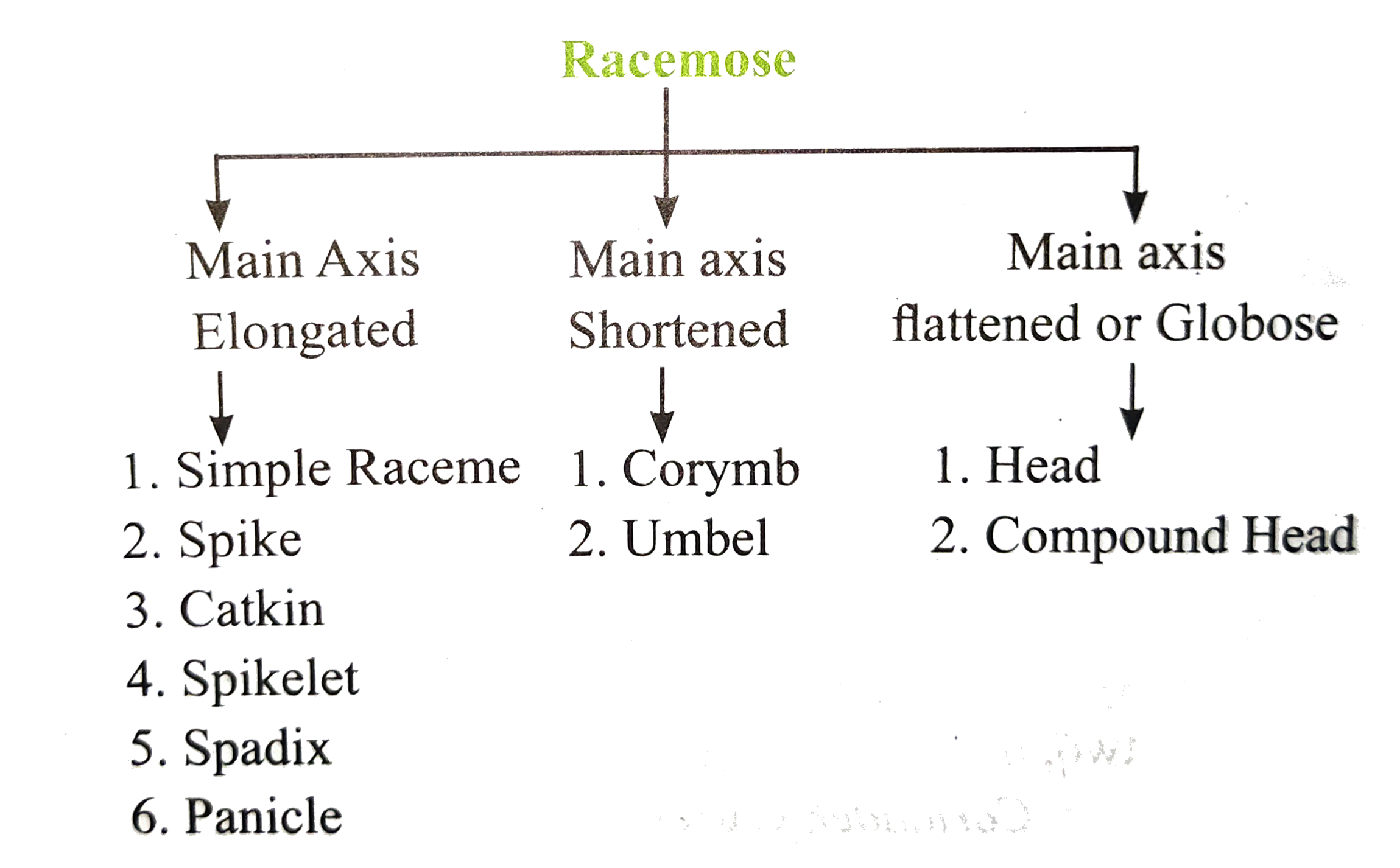
Main Axis Elongated: Axis of inflorescence is elongated and flowers may be pedicellate or sessile.
Types:
1. Simple Raceme: Unbranched Main axis has pedicellate flowers. Eg: Mustard.

2. Spike: Unbranched Main axis with sessile flowers. Eg: Achyranthes.
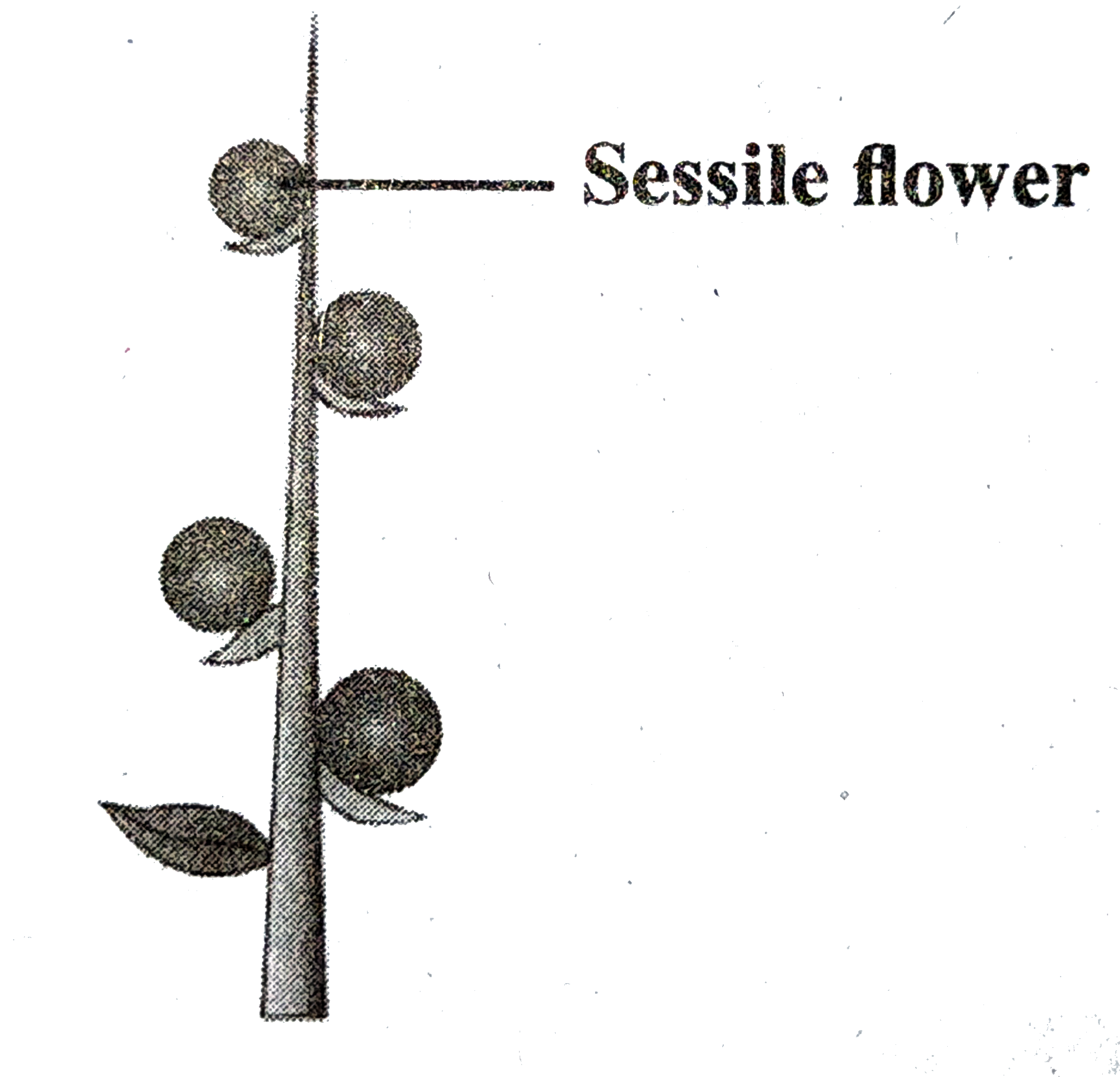
3. Spikelet: Small spike is called spikelet. The inflorescence axis has bracts at base called glumes. Each flower has bract (lemma) and bracteole (palea). Eg: Sorghum.
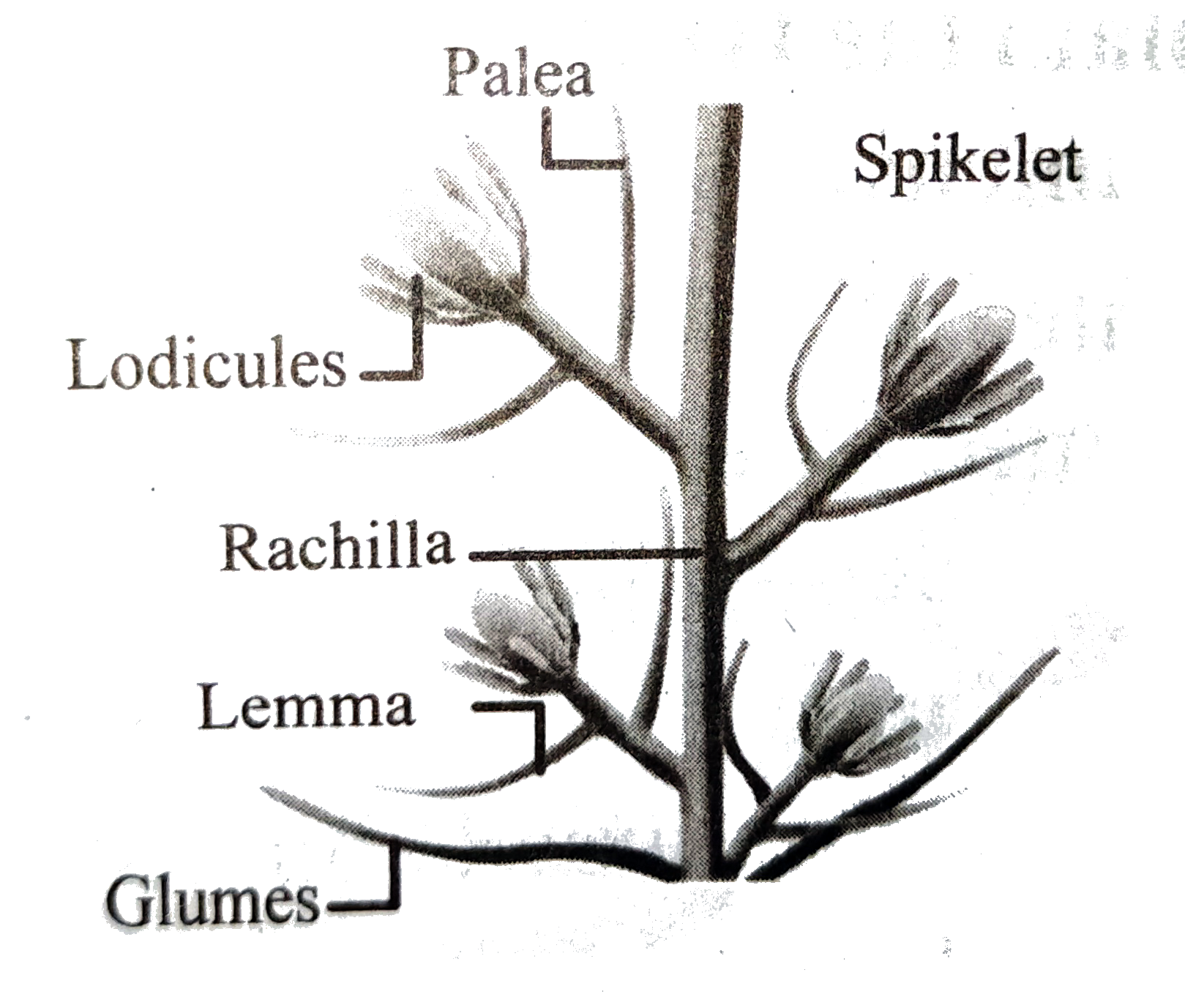
4. Catkin: Pendulous spikes with long, drooping axis bearing small unisexual or bisexual flowers. Eg: Acalypha hispida.

5. Spadix: Fleshy or thickened central axis with many unisexual flowers is acropetal succession. Entire inflorescence is covered by a brightly cloured bract called spathe. Eg: Colocasia.

6. Panicle: A branched raceme is called panicle or compound raceme. Eg: Neem.
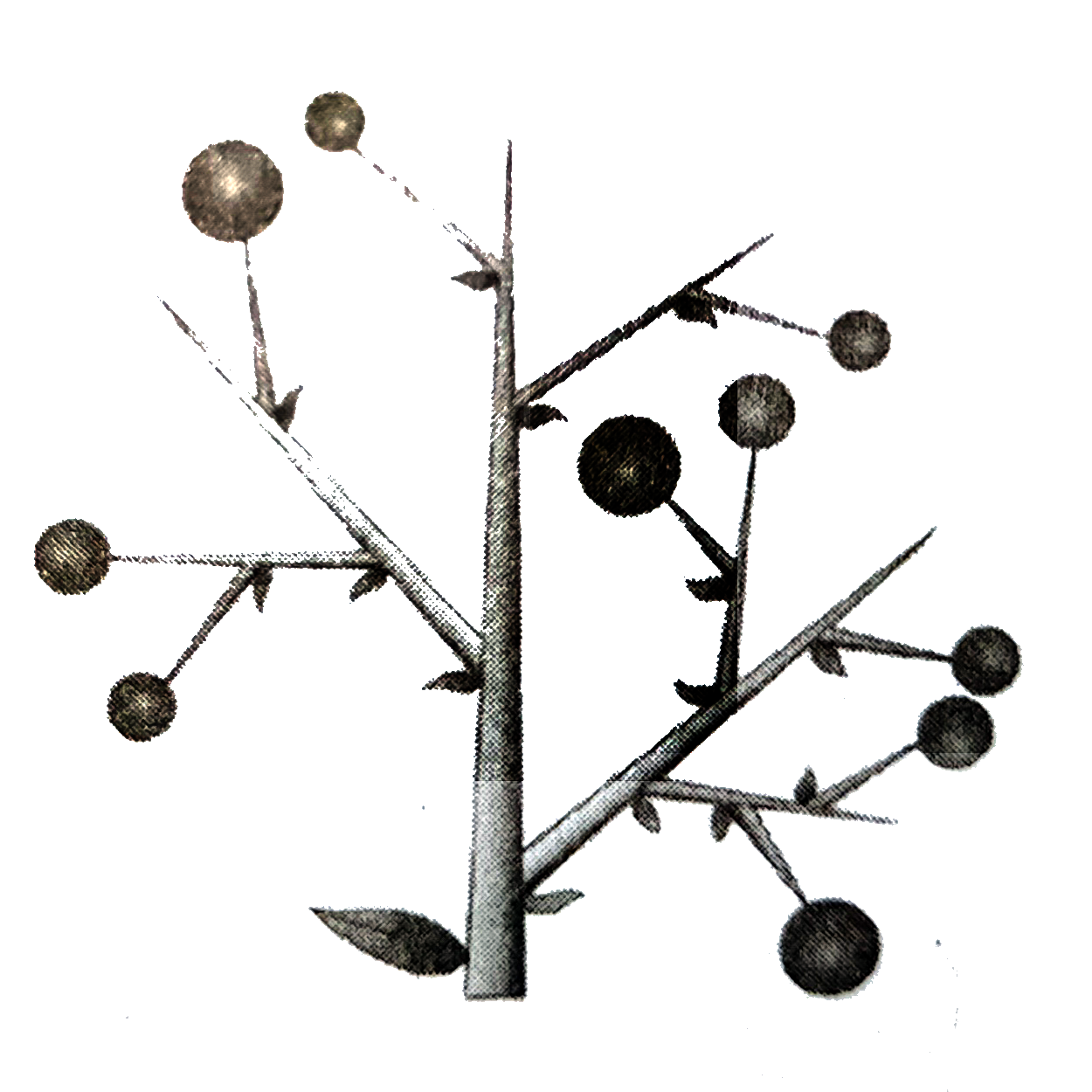
Main Axis Shortened:
Inflorescence shows reduced growth of central axis.
1. Corymb: Shorter pedicellate flowers at top and longer pedicellate flowers at the bottom of inflorescence. All flowers appear at same level. Eg: Caesalpinia.
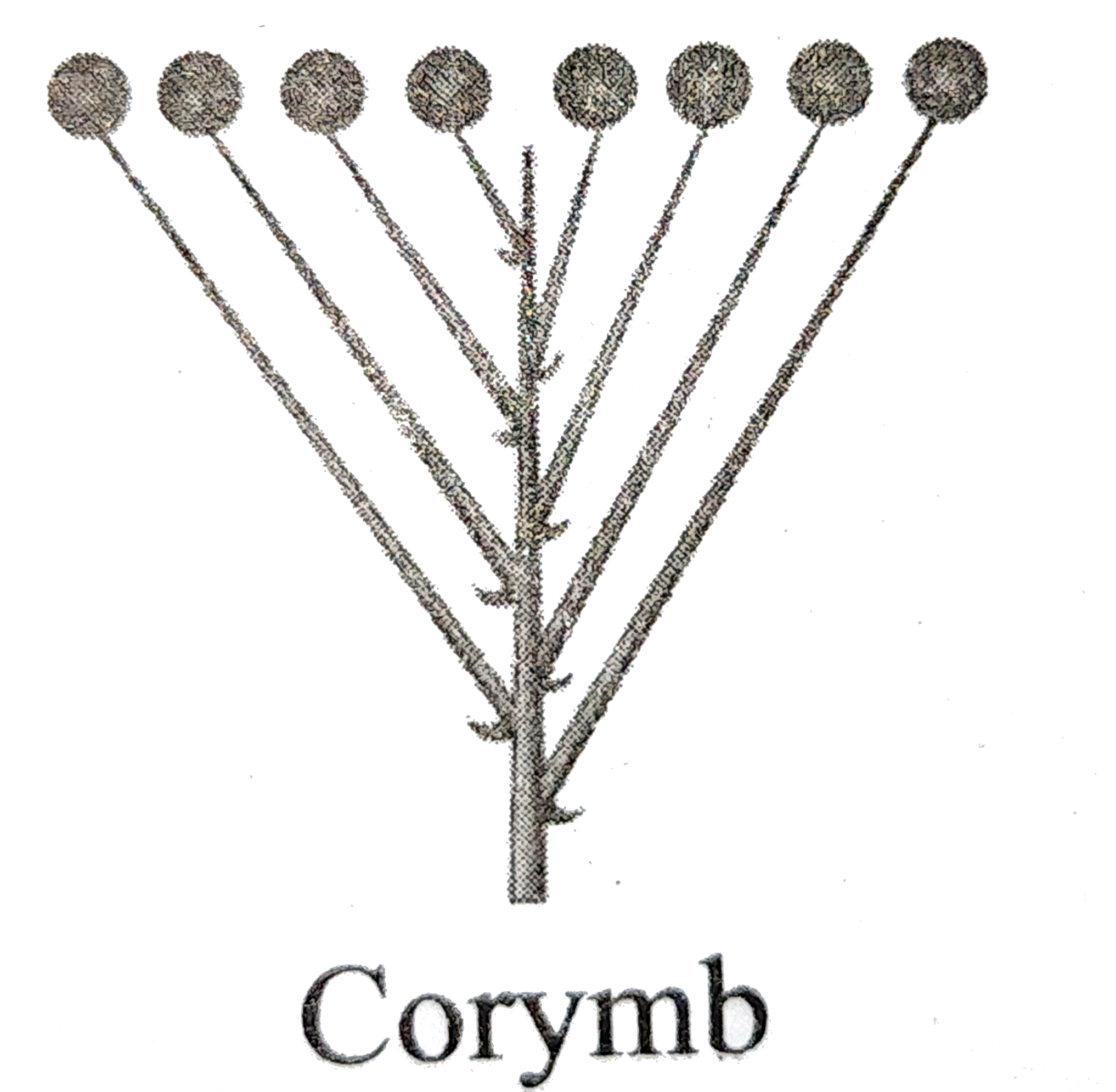
Compound Corymb: A Branched corymb is called compound corymb. Eg: Cauliflower.
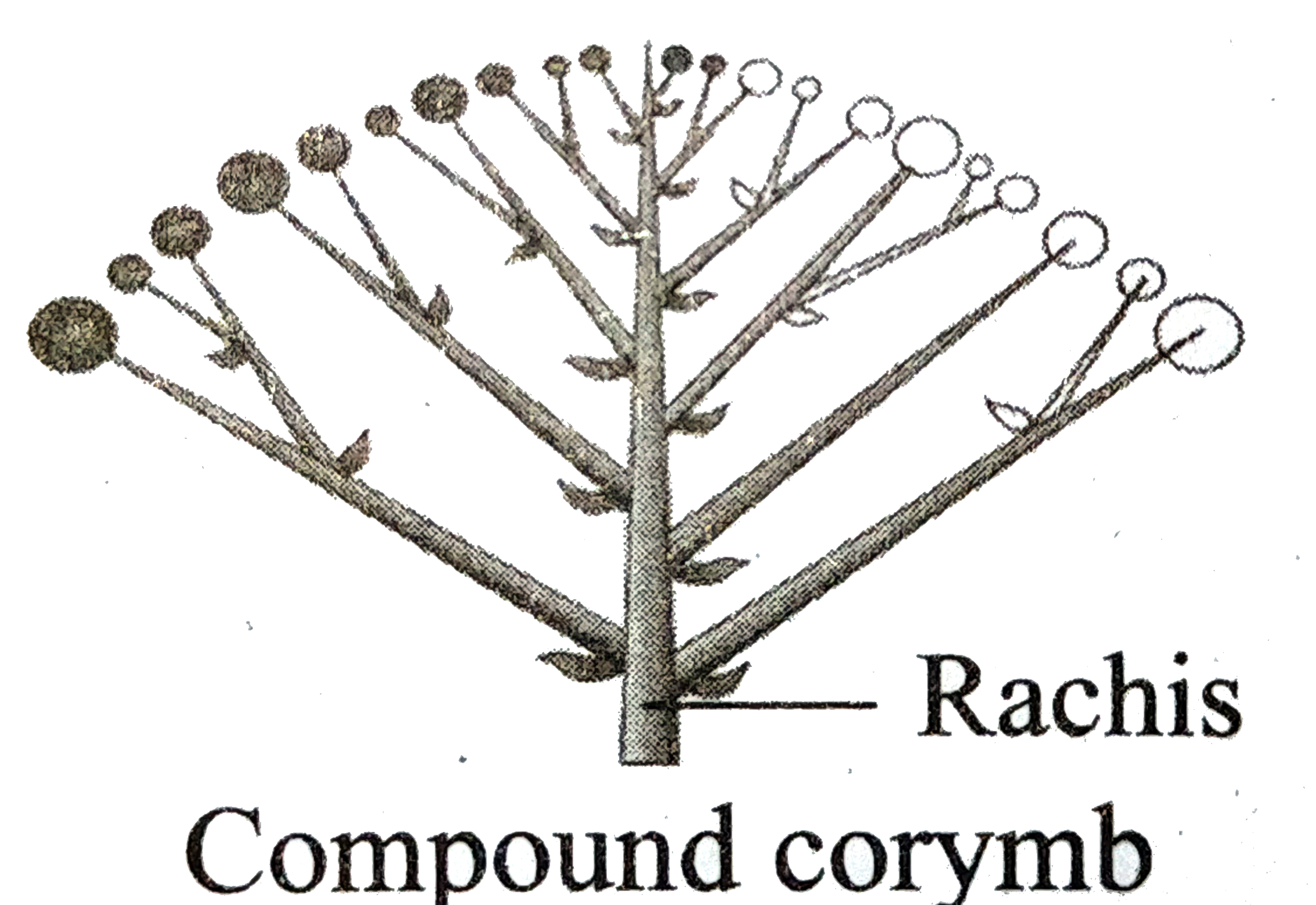
2. Umbel: Pedicellate flowers arise from tip of inflorescence axis from a common point. Eg: Allium cepa.
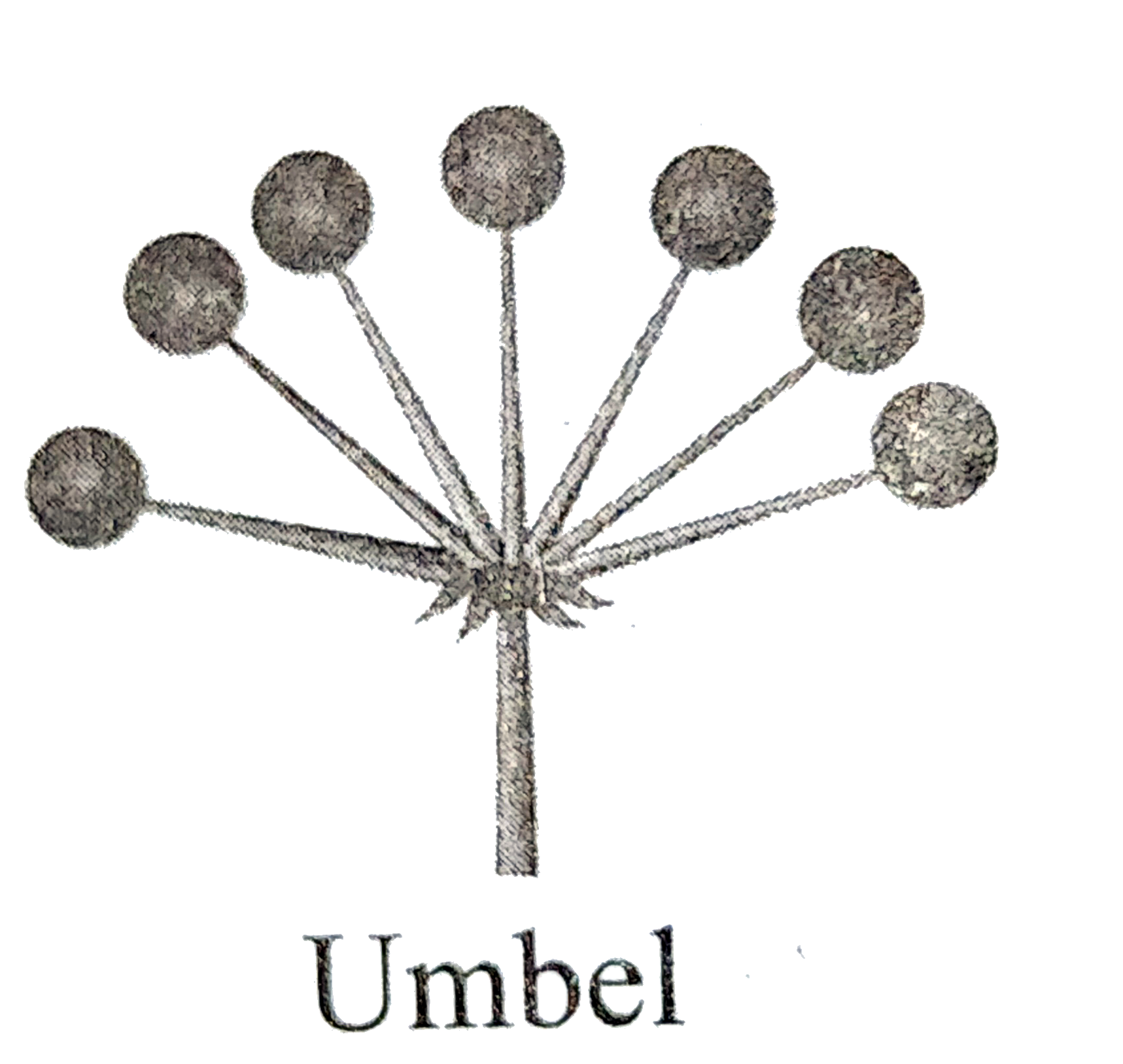
Compound umbel: It is a branched umbel. Each smaller unit is called umbellet. Eg: Daucas carota, Coriandrum sativum.
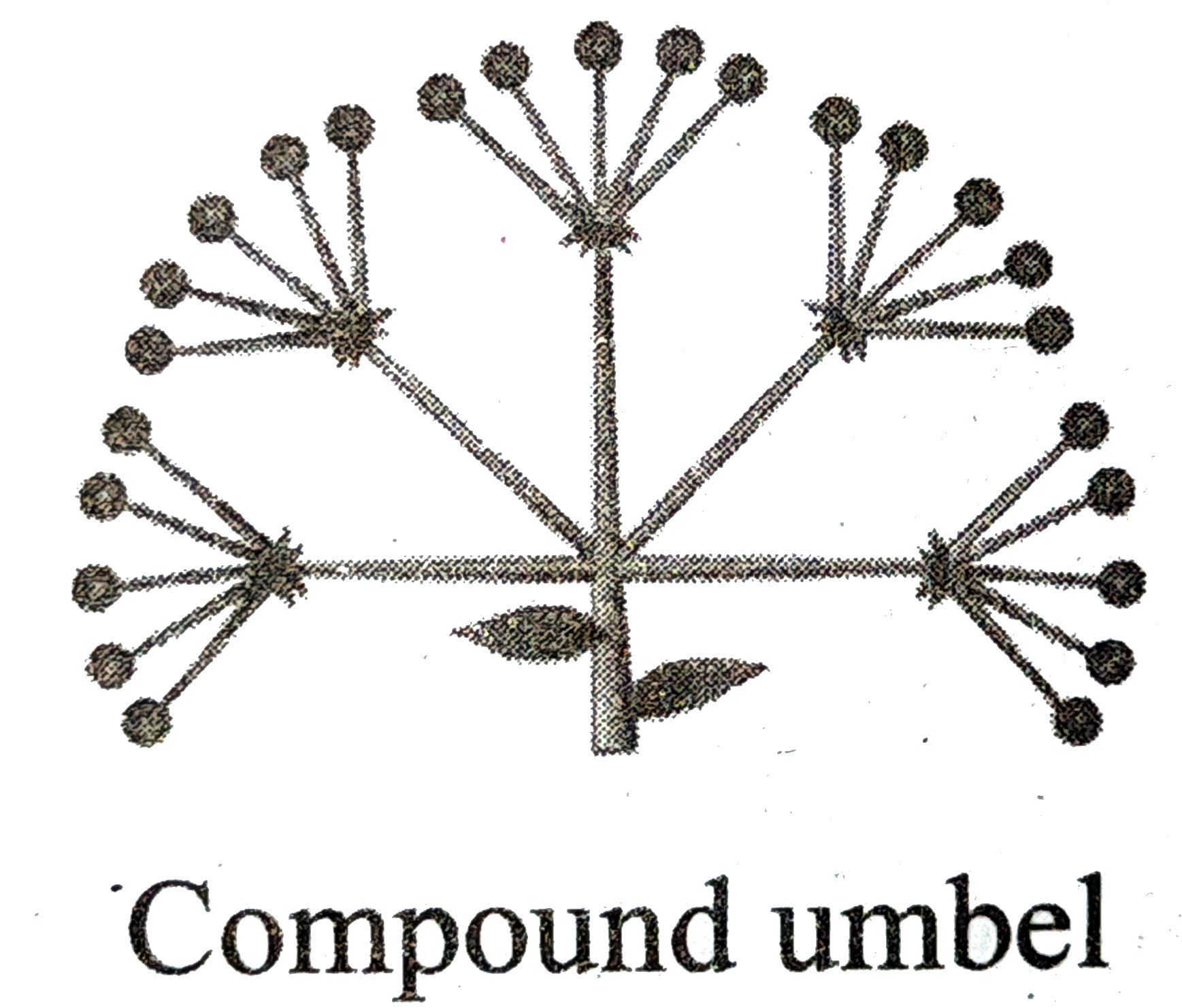
Main Axis Flattened:
1. Head: The main axis is flattened group of sessile or subsessile flowers arising on the flattened receptacle forms a head inflorescence surrounded by involucre. Eg: Asteraceae.
2. Compound Head: In Lagasca mollis the inflorescence axis is branched and each branch bears a head inflorescence.
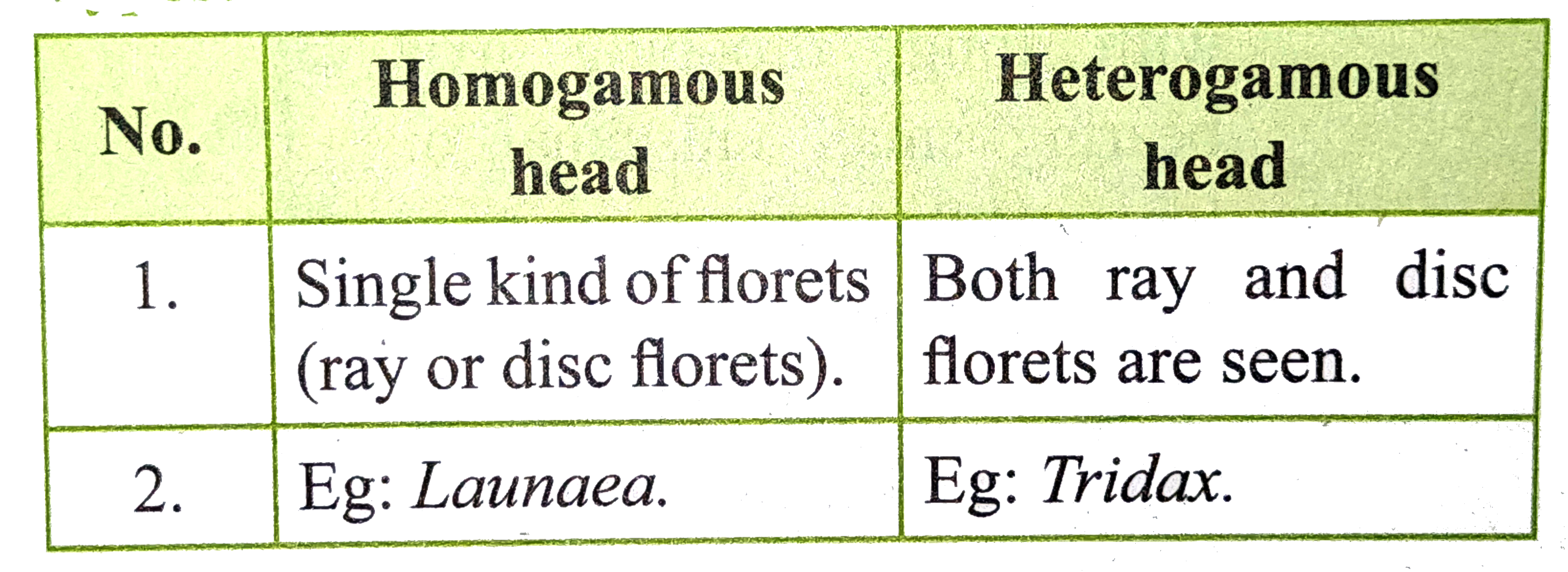
|
Updated on:21/07/2023
Similar Questions
Racemose inflorescence and cymose inflorescence
View SolutionDefine inflorescence? Name different types of racemose inflorescence with on example of each.
06:21View SolutionBuds || types OF buds || inflorescence introduction || types OF inflorescence || solitary inflorescence || racemose in florescence || cymose inflorescence || mixed inflorescence || special types OF inflorescence
01:22:54View SolutionInflorescence is racemose in
03:16View SolutionSelect an incorrect statement w.r.t. racemose type of inflorescences.
02:03View SolutionInflorescence is racemose in
02:47View SolutionWhat is inflorescence ? Name its types. Describe simple racemose inflorescence.
View SolutionInflorescence is racemose in
02:12View Solution

